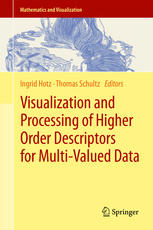

Most ebook files are in PDF format, so you can easily read them using various software such as Foxit Reader or directly on the Google Chrome browser.
Some ebook files are released by publishers in other formats such as .awz, .mobi, .epub, .fb2, etc. You may need to install specific software to read these formats on mobile/PC, such as Calibre.
Please read the tutorial at this link: https://ebookbell.com/faq
We offer FREE conversion to the popular formats you request; however, this may take some time. Therefore, right after payment, please email us, and we will try to provide the service as quickly as possible.
For some exceptional file formats or broken links (if any), please refrain from opening any disputes. Instead, email us first, and we will try to assist within a maximum of 6 hours.
EbookBell Team

4.3
18 reviewsModern imaging techniques and computational simulations yield complex multi-valued data that require higher-order mathematical descriptors. This book addresses topics of importance when dealing with such data, including frameworks for image processing, visualization and statistical analysis of higher-order descriptors. It also provides examples of the successful use of higher-order descriptors in specific applications and a glimpse of the next generation of diffusion MRI. To do so, it combines contributions on new developments, current challenges in this area and state-of-the-art surveys.
Compared to the increasing importance of higher-order descriptors in a range of applications, tools for analysis and processing are still relatively hard to come by. Even though application areas such as medical imaging, fluid dynamics and structural mechanics are very different in nature they face many shared challenges. This book provides an interdisciplinary perspective on this topic with contributions from key researchers in disciplines ranging from visualization and image processing to applications. It is based on the 5th Dagstuhl seminar on Visualization and Processing of Higher Order Descriptors for Multi-Valued Data.
This book will appeal to scientists who are working to develop new analysis methods in the areas of image processing and visualization, as well as those who work with applications that generate higher-order data or could benefit from higher-order models and are searching for novel analytical tools.